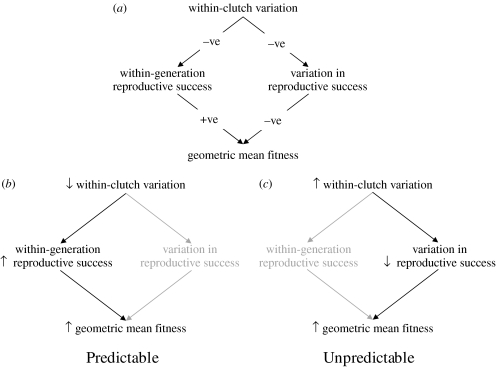Figure 1.
(a) Schematic showing the relationships among within-clutch variability in offspring size, within-generation reproductive success, among-generation variability in reproductive success and geometric mean fitness. Increasing within-clutch variability decreases reproductive success within any one generation (assuming there is a single, optimal offspring size) but decreases variability among generations. (b) When environments are predictable, mothers should decrease within-clutch variability in offspring size so as to maximize reproductive success and thus geometric mean fitness. (c) However, when environments are unpredictable, mothers should increase within-clutch variability in offspring size, decreasing among-generation variation in reproductive success in order to increase geometric mean fitness.

